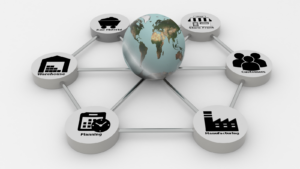Key Takeaways
- Enhanced Efficiency: Facility management software automates core tasks, minimizing administrative workload and enabling swift responses to operational issues.
- Cost Reduction: These tools optimize resource allocation, reduce unplanned downtime, and streamline vendor management, leading to significant savings.
- Comprehensive Features: Key functionalities like maintenance management, asset tracking, and space planning support better decision-making and operational alignment.
- Improved Communication: Centralized platforms foster collaboration among teams and vendors, enhancing workflow efficiency and accountability.
- Informed Decision-Making: Real-time data access and robust reporting tools enable organizations to make strategic decisions based on performance metrics.
- Careful Selection Process: Evaluating organizational needs, assessing features, and testing tools through demos are crucial steps in choosing the right software for effective facility management.
In today’s fast-paced world, effective facility management is crucial for businesses striving for efficiency and productivity.Facility management software tools have emerged as essential solutions, streamlining operations and enhancing communication across teams. These tools not only help in managing physical assets but also optimize workflows, making it easier for organizations to maintain their facilities.

With a variety of software options available, choosing the right tool can significantly impact a company’s bottom line. From tracking maintenance requests to managing space utilization, facility management software offers a comprehensive approach to tackling everyday challenges. As organizations continue to evolve, leveraging technology in facility management has never been more important for achieving success and sustainability.
Facility Management Software Tools
Facility management software tools enhance operational efficiency within organizations by automating various tasks. These tools offer functionalities such as maintenance management, asset tracking, space planning, and vendor management.
Key Features of Facility Management Software Tools
- Maintenance Management: Automates routine and emergency maintenance requests, ensuring timely responses.
- Asset Tracking: Monitors physical assets, aiding in inventory management and lifecycle tracking.
- Space Planning: Optimizes space utilization, accommodating changing organizational needs and layouts.
- Vendor Management: Streamlines communication with service providers, contract management, and performance tracking.
- Reporting and Analytics: Provides insights through data analysis, helping in decision-making and strategic planning.
- Increased Productivity: Streamlined processes minimize time spent on administrative tasks.
- Cost Efficiency: Reduces operational costs by ensuring efficient resource allocation and preventive maintenance.
- Improved Communication: Centralized platforms enhance collaboration between teams and departments.
- Enhanced Compliance: Assists in maintaining regulatory standards and safety protocols.
Facility management software tools play a vital role in modern facility management by providing comprehensive solutions for managing resources and operational activities effectively. They contribute significantly to organizational success, aligning facility management practices with broader business objectives.
Key Features of Facility Management Software Tools
Facility management software tools incorporate several critical features that enhance operational efficiency and streamline processes. The primary functionalities include asset tracking capabilities and maintenance management functions, each designed to tackle specific challenges in facility management.
Asset Tracking Capabilities
Asset tracking capabilities enable organizations to monitor and manage their physical assets effectively. This functionality includes:
- Real-Time Monitoring: Allows facilities to track asset location and condition in real-time, preventing loss and ensuring proper maintenance.
- Inventory Management: Supports efficient management of spare parts and equipment, reducing excess inventory and ensuring availability when needed.
- Lifecycle Management: Tracks each asset’s lifecycle, from acquisition through disposal, facilitating informed decision-making regarding replacements or upgrades.
- Reporting Tools: Generates comprehensive reports on asset usage and performance, aiding in optimizing resource allocation.
- Work Order Management: Automates the creation, assignment, and tracking of work orders to expedite maintenance processes and improve response times.
- Preventive Maintenance Scheduling: Establishes schedules for regular inspections and maintenance tasks, reducing downtime and extending asset life.
- Mobile Access: Provides technicians with mobile tools to update work orders and log maintenance activities in real-time, enhancing communication and efficiency.
- Compliance Tracking: Ensures that maintenance activities meet regulatory standards by tracking and documenting compliance efforts, minimizing risks associated with non-compliance.
Benefits of Using Facility Management Software Tools
Facility management software tools provide numerous advantages that enhance operational effectiveness and streamline management processes.
Increased Efficiency
Facility management software tools significantly boost efficiency by automating core tasks. Automation minimizes manual input for maintenance requests, scheduling, and communication. Furthermore, real-time data access allows facility managers and teams to respond swiftly to issues, ensuring smooth operations. Improved collaboration tools also facilitate better communication among staff, vendors, and stakeholders, reducing delays and enhancing workflow. Enhanced reporting features enable detailed insights into performance metrics, allowing for data-driven decision-making and strategies to improve processes.
Cost Reduction
Facility management software tools contribute to cost reduction in several ways. By optimizing resource allocation, these tools help identify underutilized spaces and equipment, leading to better management of assets. Predictive maintenance functionalities reduce unplanned downtime and costly repairs by anticipating maintenance needs before they escalate. Additionally, streamlined vendor management processes often result in more favorable contract negotiations, further lowering operational costs. Tracking and analyzing energy consumption through integrated reporting can also lead to significant savings, as organizations identify inefficiencies and implement energy-saving measures.
Popular Facility Management Software Tools in the Market
Several facility management software tools are prominent in today’s market. These tools cater to various organizational needs, enhancing efficiency and effectively managing resources.
Tool 1: Features and Pricing
FMX offers comprehensive features like work order management, preventive maintenance, asset tracking, and space management. The tool facilitates real-time collaboration among teams and vendors, enhancing communication. Pricing typically starts at $90 per month for small teams, with customized plans available for larger organizations.
Tool 2: Features and Pricing
Archibus provides robust functionalities, including space utilization tracking, facilities maintenance, and capital project management. This software supports detailed reporting and analytics to aid in informed decision-making. Pricing starts at approximately $5,000 annually, tailored to the organization’s size and requirements.
How to Choose the Right Facility Management Software Tool

Choosing the right facility management software tool requires careful consideration of various factors. Evaluating organizational needs ranks first, as identifying specific requirements helps to narrow down options. Facilities of different sizes demand varied functionalities, from asset tracking to maintenance management.
Assessing key features is essential. Prioritize components such as work order management, vendor management, and reporting capabilities. Ensure that the software supports mobile access for technicians, enabling quicker responses and real-time updates.
Considering budget constraints also plays a crucial role. Analyze pricing structures and subscription models. Compare options like FMX and Archibus, which cater to different organizational sizes and budgets.
Reviewing user experiences matters. Check for testimonials and case studies that illustrate the software’s effectiveness and ease of use. Highlight operational metrics to gauge overall performance and user satisfaction.
Investigating integration capabilities is important. Ensure the software can seamlessly connect with existing systems, such as accounting or ERP platforms. Solving compatibility issues accelerates implementation and minimizes disruption.
Testing tools through demos or trial periods provides hands-on experience. Engaging with the software allows for evaluation of user interface and responsiveness to specific facility management tasks.
Finally, obtaining support and training resources remains vital. Confirm that the provider offers comprehensive onboarding, user guides, and customer support. Access to help enhances user competence and maximizes software utilization.
Efficiency
Embracing facility management software tools is essential for organizations aiming to enhance operational efficiency and productivity. These tools not only streamline processes but also provide valuable insights that drive informed decision-making. By automating tasks and improving communication, businesses can focus on their core objectives while optimizing resource allocation.
Selecting the right software is crucial for maximizing benefits. Organizations should carefully assess their unique needs and consider factors like features, budget, and user support. With the right facility management software in place, companies can achieve greater sustainability and align their facility management practices with overall business goals.



